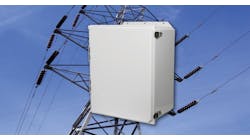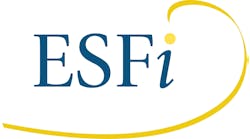What the 2020 NEC Surge Protection Mandates Mean
Every three years, the National Electric Code (NEC) undergoes revisions that move us forward toward protecting life and property more effectively. While adoption of these updated versions of the Code is not always universal, they provide significant guidelines on how to make the electrical systems we all depend on safer for everyone who uses them.
While some of the most recent changes to the 2020 NEC may seem to have come out of nowhere, that is not an accurate impression. Some of the changes that made it into this edition have been nearly a decade in the making. The focus of this article is the changes to the NEC that deal specifically with surge protection devices (SPDs) — and how those protections have now been mandated to apply to residential dwellings for the first time.
Why the focus has shifted
Before any standards for surge protection could be set, it was important to evaluate the extent of the damage caused to facilities by lightning events. For years, the National Electrical Manufacturers Association (NEMA) Surge Institute tried to access that information from nationally recognized insurance companies. The goal in getting the information was to assess how much of a threat surge damage was so the organization could provide proper guidance to front-line installers to prevent the damage from happening in the first place.
The problem was that the insurance companies were reluctant to provide the information on damage claims because they did not want to let their competitors know what their payouts were. To work around that reluctance, NEMA finally decided to send surveys directly to commercial and industrial customers to collect the data independently. The response to the survey was so overwhelming that NEMA followed up with a more detailed survey to dig more deeply into the data.
The result was a well-publicized NEMA report in 2014, detailing the effects of surge damage at structures like long-term nursing facilities, hospitals, and other industrial buildings. As a result of NEMA’s findings, significant changes were made to the 2017 NEC, including the addition of several specific Articles to address overall facility safety.
Once those guidelines were in place, NEMA turned its attention to solidifying changes for residential dwellings, a segment that had previously been low on the priority list.
Practically speaking
With multiple dwelling units, there are inductive loads such as HVAC, chillers, and other motors that could create transient voltages. A surge protection device (SPD) at the service would not be an effective way to mitigate the transient voltages because the issue mishap could take place in just one of the multiple units. This mishap could cause transient voltages that would migrate into the other units. With each dwelling unit having an SPD installed, transient voltages are better addressed no matter what the source.
As electricians become more educated on SPDs, UL 1449, and IEEE guides for installation, residential protection will become more of a standard product. With home automation becoming more common, SPDs with network interfaces will become more common as well.
The requirements in Sec. 230.67 of the 2020 NEC are designed to protect residential dwellings from surges due to lightning strikes and electric utility faults. Much like the initial changes for commercial facilities, the new guidelines for residential dwellings are a good first step — but more will need to be specified in future updates. There is more processor-driven equipment in today’s residences than ever before. Between connected televisions, home security systems, laptops, and refrigerators, there is hardly a room in the house now that does not have electronic equipment in it. And that increased electrification of the home has been reflected in the financial cost to insurance companies for surge protection damages.
In the mid-1990s, the number of claims made with insurance companies that resulted in compensation for surge damage was more frequent, but the amount of the average damage claim remained around $4,000. By the 2000s, the number of surge protection claims was going down, but the amount of damage reported had skyrocketed to an average of $15,000 per claim.
What the new requirements mean for you
The 2020 NEC specifically requires SPDs to be installed on all services supplying dwelling units. Whether it is a single-family home, two- to three-family dwelling unit, or apartment structure, SPDs are now required. Where exactly you install this SPD has led to some industry discussions.
One item that some electrical professionals view as a shortcoming is a suggestion that an SPD can be installed in a meter panel or disconnect that is many feet away from the service panel containing the circuit breaker. After all, the electric utility meter socket is not part of the service, and the components between the meter socket and service panel are all defined as part of the service. But others believe (for full protection) the SPD should be installed at the service panel, not the meter panel.
Some industry professionals note there is no guidance on the maximum surge protection for residential dwellings. For some industries that are using the same utility voltage as residential homes, the engineering community requires the minimums associated with the UL 1449 rating, whose specifications include the Short Circuit Current Rating and Nominal Discharge Current Rating. In most cases, there is also a maximum surge rating specified. In lightning protection systems, there are minimum UL 1449 ratings required, but there are SPDs in the residential dwelling segment that would not meet those specifications for these engineering-specified projects or lightning protection systems.
As with all regulations, the NEC will continue to evolve, addressing protection for these other vulnerable areas. It is also expected that better installation practices will be adopted, and the UL 1449 ratings will be looked at more carefully for service entrance requirements.
When will states adopt NEC 2020?
At the writing of this article in August 2021, 12 states had adopted the 2020 NEC for their jurisdictions, including the regulations for SPDs. Twelve additional states are currently in transition. The remaining states are operating on earlier versions of the NEC or other electrical codes.
Fortunately for consumers, it doesn’t necessarily take a statewide mandate for the provisions of the 2020 NEC to be adopted. Municipalities, counties, and other authorities having jurisdiction (AHJs) can adopt the most up-to-date NEC regulations on their own — and frequently do. Though a patchwork approach is not ideal, the more AHJs that adopt the 2020 NEC, the more likely it is that the state in which they operate will eventually adopt it as well.
As the electrification of the U.S. economy continues and new forms of generation are developed (renewable energy sources), it will be more necessary than ever to protect this valuable infrastructure from unwanted surges. And as damage claims continue to climb in value, insurance companies will begin to require SPDs on residential dwellings that are particularly vulnerable.
The 2020 NEC updates are an excellent first step in streamlining the regulations concerning SPDs, and it will be fascinating to see where they go in the future.
Rick Syverson is the North American Surge Market Manager for nVent ERICO.




